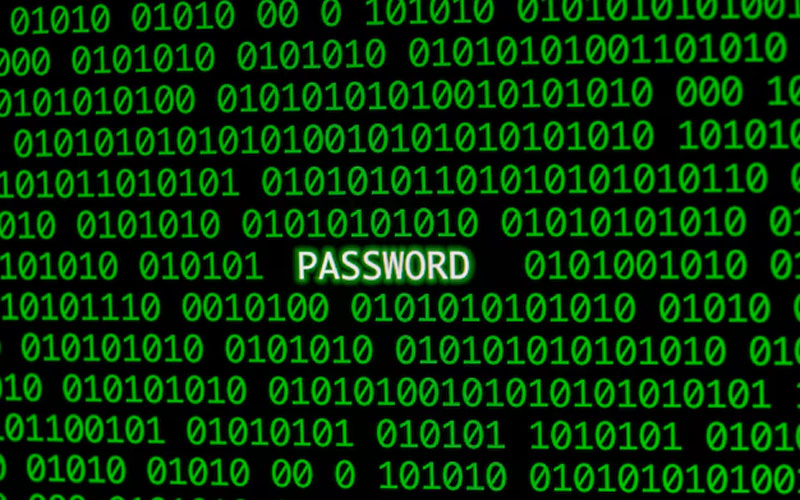Blog
Cñims: Unlocking the Power of the Top N

In today’s fast-paced world, staying informed about various systems and methodologies is crucial for personal and professional growth. One term that is gaining attention is cñims. This article will delve into what cñims is, its significance, and how it can positively impact various aspects of life and work.
What is Cñims?

Cñims is an acronym that stands for Comprehensive Needs and Information Management System. It is a framework designed to gather, analyze, and manage data related to needs assessment and information dissemination. The core purpose of cñims is to provide a structured approach for organizations, communities, and individuals to identify needs and develop effective strategies to meet those needs.
Key Components of Cñims
- Data Collection: Cñims involves systematic data gathering from various sources, ensuring that the information is accurate and relevant. This data can include surveys, interviews, and focus groups.
- Analysis: Once data is collected, it undergoes thorough analysis to identify trends, patterns, and gaps. This step is crucial for understanding the specific needs of the population or organization.
- Action Planning: Based on the analysis, stakeholders can develop action plans that address identified needs. This ensures that resources are allocated effectively and that interventions are targeted.
- Monitoring and Evaluation: Cñims emphasizes the importance of ongoing monitoring and evaluation. This allows organizations to assess the effectiveness of their strategies and make necessary adjustments.
The Importance of Cñims
1. Informed Decision-Making
One of the primary benefits of cñims is that it promotes informed decision-making. By providing a structured approach to data collection and analysis, stakeholders can make decisions based on evidence rather than assumptions. This leads to more effective and efficient strategies.
2. Resource Allocation
Cñims helps organizations allocate resources more effectively. By identifying specific needs and prioritizing them, organizations can ensure that their resources are directed toward the most pressing issues. This not only maximizes impact but also minimizes waste.
3. Improved Communication
The framework encourages clear communication among stakeholders. By involving various parties in the data collection and analysis process, cñims fosters collaboration and transparency. This is essential for building trust and ensuring that everyone is on the same page.
4. Enhanced Accountability
With cñims, organizations can establish clear metrics for success. This enhances accountability as stakeholders can track progress and evaluate the effectiveness of their interventions. When everyone is aware of the goals and outcomes, it fosters a culture of responsibility.
5. Adaptability and Flexibility
The ongoing monitoring and evaluation aspect of cñims allows organizations to be adaptable and flexible. As needs change, organizations can adjust their strategies accordingly. This responsiveness is crucial in today’s dynamic environment.
How to Implement Cñims
1. Define Objectives
Before implementing cñims, it is essential to define clear objectives. What are you hoping to achieve? Understanding your goals will guide the data collection and analysis process.
2. Identify Stakeholders
Engage relevant stakeholders early in the process. This includes team members, community representatives, and any other parties who will be affected by the outcomes. Their input will enrich the data collection process and ensure diverse perspectives are considered.
3. Develop Data Collection Tools
Create or select appropriate tools for data collection. Surveys, interviews, and focus groups are common methods, but it’s crucial to choose tools that align with your objectives and the population you’re serving.
4. Collect Data
Implement your data collection plan. Ensure that the process is systematic and that data is gathered consistently across different groups or locations. This will enhance the reliability of your findings.
5. Analyze the Data
Once data is collected, conduct a thorough analysis. Look for trends, patterns, and insights that can inform your action plan. Utilize software and tools that can aid in this process.
6. Develop an Action Plan
Based on the analysis, create a comprehensive action plan that outlines specific interventions, responsible parties, timelines, and metrics for success. Ensure that the plan is realistic and aligned with the identified needs.
7. Monitor and Evaluate
Implement a monitoring and evaluation framework to track progress. Regularly review the effectiveness of your strategies and make adjustments as necessary. This will ensure that you remain responsive to changing needs.
Case Studies: Successful Implementation of Cñims
Case Study 1: Community Health Initiative
In a rural community, local health officials recognized a rise in chronic illnesses but lacked a clear understanding of the underlying causes. By implementing cñims, they conducted surveys and focus groups to gather data on health behaviors, access to healthcare, and socio-economic factors.
The analysis revealed significant barriers to accessing healthcare services. Based on this information, the officials developed targeted health education programs and improved access to medical resources. Over the following year, the community saw a decrease in chronic illness rates, demonstrating the effectiveness of data-driven decision-making.
Case Study 2: Educational Reform
An urban school district was facing declining student performance and increased dropout rates. By adopting cñims, the district gathered data from students, parents, and teachers to identify the specific challenges faced by students.
The analysis highlighted issues such as lack of engagement, inadequate support services, and insufficient resources. Armed with this information, the district implemented mentorship programs, increased funding for extracurricular activities, and enhanced academic support services. As a result, student performance improved, and dropout rates decreased significantly.
Challenges of Implementing Cñims
While the benefits of cñims are clear, organizations may face challenges during implementation:
1. Resistance to Change
Stakeholders may resist new processes or methodologies. To combat this, it’s essential to communicate the benefits of cñims clearly and involve stakeholders in the planning process.
2. Data Privacy Concerns
Collecting sensitive data raises privacy concerns. Organizations must establish clear protocols for data management and ensure compliance with relevant regulations to protect individual privacy.
3. Resource Limitations
Implementing cñims requires resources, including time, personnel, and funding. Organizations should assess their capacity before committing to the process and seek partnerships or grants if necessary.
4. Skills Gap
Organizations may lack the necessary skills for effective data collection and analysis. Training and capacity-building initiatives can address this gap and empower team members to contribute effectively.
The Future of Cñims
As the demand for data-driven decision-making continues to grow, the importance of frameworks like cñims will only increase. Organizations across sectors—healthcare, education, community development—are recognizing the value of comprehensive needs assessments in driving impactful change.
Innovations in Technology
The future of cñims will likely see advancements in technology that streamline data collection and analysis. Tools like mobile applications and data visualization software will make it easier for organizations to gather insights quickly and effectively.
Emphasis on Collaboration
Collaboration will become increasingly important as organizations recognize that complex challenges often require multifaceted solutions. Cñims can facilitate partnerships between different sectors, allowing for shared resources and expertise.
Greater Focus on Inclusivity
As cñims evolves, there will be a greater emphasis on inclusivity and equity. Ensuring that marginalized voices are heard in the needs assessment process will be crucial for creating effective and fair interventions.
Conclusion
cñims represents a powerful approach to understanding and addressing needs within organizations and communities. By embracing this comprehensive framework, stakeholders can make informed decisions, allocate resources effectively, and ultimately drive meaningful change.
Blog
Remise en Question: The Importance of Self-Reflection

Self-reflection, or remise en question as it is known in French, plays a pivotal role in personal development and growth. It is the process of questioning one’s own beliefs, decisions, and actions to gain a deeper understanding of oneself. This act of introspection helps individuals identify areas for improvement, redefine their goals, and realign their values with their actions. In both personal and professional contexts, remise en question leads to better decision-making, enhanced problem-solving skills, and increased emotional intelligence. Understanding the synonyms and various ways to describe this process can enrich our vocabulary and deepen our understanding of this critical concept.
In this article, we will explore the concept of remise en question (questioning oneself), its significance, and its impact on personal growth. We will also delve into the various synonyms of this term and how they reflect the multifaceted nature of self-reflection. Understanding these nuances can help individuals embrace the practice of self-reflection more fully and develop a greater sense of self-awareness.
What is “Remise en Question”?

“Remise en question” is a French term that can be translated to “questioning oneself” or “re-evaluating” in English. It refers to the act of critically examining one’s beliefs, actions, and perspectives. In essence, it is the process of taking a step back and assessing whether your thoughts or decisions align with your values, goals, and circumstances.
Engaging in remise en question is essential for personal growth because it encourages individuals to question the status quo, seek improvement, and challenge preconceived notions. This process leads to greater self-awareness and can inspire positive changes in behavior, mindset, and lifestyle.
In many cases, remise en question happens after moments of personal failure or dissatisfaction, but it can also occur after successes when one seeks to find new ways to improve. The willingness to engage in this self-reflection process is essential for adapting to life’s challenges and continuously evolving as a person.
Synonyms of “Remise en Question”
The concept of questioning oneself is not limited to just one term. In fact, various synonyms and phrases can be used to convey different aspects of remise en question. Each synonym reflects a different angle of self-reflection and its impact on personal growth. Below, we will explore some of the most common synonyms and their meanings:
1. Self-Examination
Self-examination is one of the closest synonyms to remise en question, as it involves scrutinizing one’s own thoughts, feelings, and actions. It is often used in the context of moral or ethical reflection. Individuals who engage in self-examination assess their values, decisions, and behavior in order to determine whether they align with their personal standards and ideals. This process can be an ongoing practice of evaluating oneself and one’s actions.
For example, after a conflict at work, a person may engage in self-examination to understand their own role in the situation and identify areas where they could have responded differently. Self-examination helps individuals identify areas for improvement and move toward positive change.
2. Introspection
Introspection is another synonym for remise en question and is often used interchangeably with self-reflection. Introspection refers to the process of looking inward to observe and analyze one’s own thoughts and feelings. It involves a deeper level of introspective thinking and an awareness of how one’s mind works.
Introspection can be particularly valuable for understanding the underlying reasons behind certain behaviors and thought patterns. For example, when someone is struggling with anxiety, introspection might help them understand the root causes of their worry and identify ways to cope with those emotions.
3. Self-Assessment
Self-assessment is a process through which individuals evaluate their own skills, strengths, and weaknesses. It is often used in professional settings to gauge one’s performance or to assess progress toward a goal. This synonym of remise en question involves reflecting on past actions or behaviors and measuring them against a set of criteria or objectives.
For example, after completing a project at work, you might engage in self-assessment to determine what went well and what could be improved for next time. By assessing your own abilities, you gain valuable insights into your personal development and can set new goals to enhance your skills.
4. Self-Criticism
Self-criticism involves examining one’s own actions or thoughts with a focus on identifying mistakes or shortcomings. Unlike constructive self-reflection, which is aimed at improving oneself, self-criticism often involves a more judgmental or negative approach to self-reflection. While some self-criticism is necessary for growth, excessive self-criticism can lead to feelings of guilt, shame, or low self-esteem.
When engaging in remise en question, it is important to differentiate between productive self-criticism and unproductive negative self-talk. Constructive self-criticism helps an individual recognize areas for growth without falling into a negative spiral of self-doubt.
5. Reevaluation
Reevaluation is another term that closely resembles remise en question. It involves reconsidering or reassessing one’s decisions, goals, or strategies. Reevaluating is often done when there are significant changes in circumstances or when previous plans no longer seem relevant or effective.
For instance, if someone’s life situation changes, such as moving to a new city or starting a new career, they might engage in reevaluation to assess whether their current goals align with their new circumstances. Reevaluation allows individuals to adjust their plans and priorities to better reflect their current needs.
6. Contemplation
Contemplation is a synonym of remise en question that refers to deep, reflective thinking. It often involves careful thought about one’s life, decisions, and experiences. Contemplation can be a more philosophical or spiritual process in which an individual reflects on the meaning and purpose of their existence.
For example, someone might engage in contemplation when considering major life decisions, such as whether to change careers or move to a new location. By contemplating their options, individuals are better equipped to make thoughtful, informed choices.
7. Soul-Searching
Soul-searching is a term often used to describe the act of deep introspection and questioning one’s life purpose, values, and direction. It involves reflecting on the meaning of life, personal motivations, and existential concerns. Soul-searching is often done in response to a major life event, such as a loss or crisis, but it can also occur at times when one seeks greater meaning or understanding.
Through soul-searching, individuals may gain clarity about their desires and goals, leading them to make life changes or take new paths in pursuit of personal fulfillment.
The Role of “Remise en Question” in Personal Growth
Engaging in remise en question is crucial for personal growth and self-improvement. By questioning your assumptions, beliefs, and decisions, you open the door to new perspectives and insights. The process of self-reflection encourages personal accountability and empowers individuals to make informed, intentional choices.
The benefits of self-reflection and questioning oneself are vast. For example, self-reflection can improve emotional intelligence by helping individuals become more aware of their emotions and how they influence behavior. It can also enhance problem-solving abilities by allowing individuals to step back from a situation and view it from multiple angles.
Additionally, remise en question can foster resilience. When individuals regularly assess their decisions and learn from their mistakes, they build the mental flexibility needed to adapt to change and overcome adversity.
In a professional setting, engaging in remise en question can lead to better leadership and decision-making. By reflecting on their own actions and leadership style, managers and executives can identify areas where they can improve and build stronger, more effective teams.
Conclusion
The practice of remise en question, or questioning oneself, is essential for growth and personal development. By engaging in self-reflection, individuals can gain clarity about their goals, values, and behaviors. Synonyms of this term, such as self-examination, introspection, and reevaluation, each reflect different aspects of the self-reflection process, but they all share the common goal of helping individuals understand themselves better.
Through regular questioning of one’s own actions and beliefs, individuals can improve their emotional intelligence, make better decisions, and achieve greater personal fulfillment. Whether in moments of success or failure, remise en question provides an opportunity to learn, grow, and become a more thoughtful, aware person. By embracing this process, individuals open themselves up to a lifetime of self-discovery and improvement.
Self-reflection, or remise en question as it is known in French, plays a pivotal role in personal development and growth. It is the process of questioning one’s own beliefs, decisions, and actions to gain a deeper understanding of oneself. This act of introspection helps individuals identify areas for improvement, redefine their goals, and realign their values with their actions. In both personal and professional contexts, remise en question leads to better decision-making, enhanced problem-solving skills, and increased emotional intelligence. Understanding the synonyms and various ways to describe this process can enrich our vocabulary and deepen our understanding of this critical concept.
In this article, we will explore the concept of remise en question (questioning oneself), its significance, and its impact on personal growth. We will also delve into the various synonyms of this term and how they reflect the multifaceted nature of self-reflection. Understanding these nuances can help individuals embrace the practice of self-reflection more fully and develop a greater sense of self-awareness.
What is “Remise en Question”?
“Remise en question” is a French term that can be translated to “questioning oneself” or “re-evaluating” in English. It refers to the act of critically examining one’s beliefs, actions, and perspectives. In essence, it is the process of taking a step back and assessing whether your thoughts or decisions align with your values, goals, and circumstances.
Engaging in remise en question is essential for personal growth because it encourages individuals to question the status quo, seek improvement, and challenge preconceived notions. This process leads to greater self-awareness and can inspire positive changes in behavior, mindset, and lifestyle.
In many cases, remise en question happens after moments of personal failure or dissatisfaction, but it can also occur after successes when one seeks to find new ways to improve. The willingness to engage in this self-reflection process is essential for adapting to life’s challenges and continuously evolving as a person.
Synonyms of “Remise en Question”

The concept of questioning oneself is not limited to just one term. In fact, various synonyms and phrases can be used to convey different aspects of remise en question. Each synonym reflects a different angle of self-reflection and its impact on personal growth. Below, we will explore some of the most common synonyms and their meanings:
1. Self-Examination
Self-examination is one of the closest synonyms to remise en question, as it involves scrutinizing one’s own thoughts, feelings, and actions. It is often used in the context of moral or ethical reflection. Individuals who engage in self-examination assess their values, decisions, and behavior in order to determine whether they align with their personal standards and ideals. This process can be an ongoing practice of evaluating oneself and one’s actions.
For example, after a conflict at work, a person may engage in self-examination to understand their own role in the situation and identify areas where they could have responded differently. Self-examination helps individuals identify areas for improvement and move toward positive change.
2. Introspection
Introspection is another synonym for remise en question and is often used interchangeably with self-reflection. Introspection refers to the process of looking inward to observe and analyze one’s own thoughts and feelings. It involves a deeper level of introspective thinking and an awareness of how one’s mind works.
Introspection can be particularly valuable for understanding the underlying reasons behind certain behaviors and thought patterns. For example, when someone is struggling with anxiety, introspection might help them understand the root causes of their worry and identify ways to cope with those emotions.
3. Self-Assessment
Self-assessment is a process through which individuals evaluate their own skills, strengths, and weaknesses. It is often used in professional settings to gauge one’s performance or to assess progress toward a goal. This synonym of remise en question involves reflecting on past actions or behaviors and measuring them against a set of criteria or objectives.
For example, after completing a project at work, you might engage in self-assessment to determine what went well and what could be improved for next time. By assessing your own abilities, you gain valuable insights into your personal development and can set new goals to enhance your skills.
4. Self-Criticism
Self-criticism involves examining one’s own actions or thoughts with a focus on identifying mistakes or shortcomings. Unlike constructive self-reflection, which is aimed at improving oneself, self-criticism often involves a more judgmental or negative approach to self-reflection. While some self-criticism is necessary for growth, excessive self-criticism can lead to feelings of guilt, shame, or low self-esteem.
When engaging in remise en question, it is important to differentiate between productive self-criticism and unproductive negative self-talk. Constructive self-criticism helps an individual recognize areas for growth without falling into a negative spiral of self-doubt.
5. Reevaluation
Reevaluation is another term that closely resembles remise en question. It involves reconsidering or reassessing one’s decisions, goals, or strategies. Reevaluating is often done when there are significant changes in circumstances or when previous plans no longer seem relevant or effective.
For instance, if someone’s life situation changes, such as moving to a new city or starting a new career, they might engage in reevaluation to assess whether their current goals align with their new circumstances. Reevaluation allows individuals to adjust their plans and priorities to better reflect their current needs.
6. Contemplation
Contemplation is a synonym of remise en question that refers to deep, reflective thinking. It often involves careful thought about one’s life, decisions, and experiences. Contemplation can be a more philosophical or spiritual process in which an individual reflects on the meaning and purpose of their existence.
For example, someone might engage in contemplation when considering major life decisions, such as whether to change careers or move to a new location. By contemplating their options, individuals are better equipped to make thoughtful, informed choices.
7. Soul-Searching
Soul-searching is a term often used to describe the act of deep introspection and questioning one’s life purpose, values, and direction. It involves reflecting on the meaning of life, personal motivations, and existential concerns. Soul-searching is often done in response to a major life event, such as a loss or crisis, but it can also occur at times when one seeks greater meaning or understanding.
Through soul-searching, individuals may gain clarity about their desires and goals, leading them to make life changes or take new paths in pursuit of personal fulfillment.
The Role of “Remise en Question” in Personal Growth

Engaging in remise en question is crucial for personal growth and self-improvement. By questioning your assumptions, beliefs, and decisions, you open the door to new perspectives and insights. The process of self-reflection encourages personal accountability and empowers individuals to make informed, intentional choices.
The benefits of self-reflection and questioning oneself are vast. For example, self-reflection can improve emotional intelligence by helping individuals become more aware of their emotions and how they influence behavior. It can also enhance problem-solving abilities by allowing individuals to step back from a situation and view it from multiple angles.
Additionally, remise en question can foster resilience. When individuals regularly assess their decisions and learn from their mistakes, they build the mental flexibility needed to adapt to change and overcome adversity.
In a professional setting, engaging in remise en question can lead to better leadership and decision-making. By reflecting on their own actions and leadership style, managers and executives can identify areas where they can improve and build stronger, more effective teams.
Conclusion
The practice of remise en question, or questioning oneself, is essential for growth and personal development. By engaging in self-reflection, individuals can gain clarity about their goals, values, and behaviors. Synonyms of this term, such as self-examination, introspection, and reevaluation, each reflect different aspects of the self-reflection process, but they all share the common goal of helping individuals understand themselves better.
Through regular questioning of one’s own actions and beliefs, individuals can improve their emotional intelligence, make better decisions, and achieve greater personal fulfillment. Whether in moments of success or failure, remise en question provides an opportunity to learn, grow, and become a more thoughtful, aware person. By embracing this process, individuals open themselves up to a lifetime of self-discovery and improvement.
Also Visit: Foot en Salle: The Growing Popularity of Indoor Soccer
Acclamer Définition: Understanding the Power of Applause and Acclaim
Prague Workation: The Ultimate Guide to Working Remotely in the Czech Capital
Cat Breeder Byron: Your Guide to Finding the Perfect Feline Companion
Blog
Foot en Salle: The Growing Popularity of Indoor Soccer

Foot en salle,” or indoor soccer, is a fast-paced, exciting version of traditional soccer (football) played indoors, usually on a smaller, hard court. Known globally as futsal, the sport has been gaining popularity due to its unique style of play, emphasis on skill, and the advantages of being able to play regardless of weather conditions. Futsal combines the technical aspects of soccer with a more intense, skill-based environment, making it an ideal game for players of all ages.
Whether you’re a soccer enthusiast, a professional athlete, or someone simply looking for an exciting recreational activity, foot en salle offers a range of benefits and opportunities. In this article, we will explore the origins of futsal, the rules that define it, the benefits it offers players, and its rising popularity across the globe.
What is Foot en Salle (Futsal)?

“Foot en salle” (French for “indoor football”) is a term used in France and some other French-speaking countries to refer to futsal, which is the internationally recognized name for the indoor version of soccer. The game is typically played on a hard court smaller than a standard soccer field, with teams of five players each. Unlike traditional soccer, futsal is usually played with a smaller, heavier ball, which encourages more control and precision when passing and shooting.
The sport was developed in the 1930s in Uruguay by Juan Carlos Ceriani, who created futsal as a way to allow young people to play soccer indoors, especially in urban areas with limited space for outdoor soccer fields. Over time, futsal spread throughout South America and eventually to the rest of the world, where it gained recognition as a separate but complementary version of soccer.
Futsal is governed by specific rules, which set it apart from soccer. While the primary goal is the same—to score more goals than the opposing team—the nature of the game is more technical. Players are encouraged to use quick thinking, sharp dribbling, and precise ball control, which leads to a faster-paced and often more dynamic version of soccer.
The Rules of Foot en Salle
Futsal shares many similarities with traditional soccer but also has several key differences. Here are some of the main rules that distinguish foot en salle from regular soccer:
1. Small Playing Area
A futsal court is significantly smaller than a traditional soccer field, typically measuring between 25 to 42 meters in length and 16 to 25 meters in width. This smaller playing area forces players to be more creative and skillful with their movements, as there is less space to operate.
2. Five Players per Team
Each futsal team consists of five players, including a goalkeeper. The reduced number of players means more action, as every player is involved in both offensive and defensive plays. There is also a greater emphasis on teamwork, with quick passes and off-the-ball movement being critical to success.
3. The Ball
Futsal is played with a smaller, heavier ball compared to a regular soccer ball. The size 4 futsal ball is designed to bounce less, which helps players focus on close ball control and precise passing. This feature helps to create a game with fewer long passes and more emphasis on dribbling and short, quick exchanges.
4. Substitutions
In foot en salle, teams are allowed to make unlimited substitutions during the match. This means that fresh players can come onto the court at any time, which keeps the game fast-paced and intense. Substitutes must enter and exit the field from designated areas, and there are specific rules governing when substitutions can be made.
5. Game Duration
Futsal matches are typically played in two 20-minute halves, with a short break in between. In some variations, the clock stops during certain situations, such as when the ball goes out of bounds or after a foul is committed, to ensure that the game runs in real-time. This structure leads to a more continuous and high-energy game compared to outdoor soccer.
6. No Walls or Boards
Unlike some indoor soccer variations where walls or boards are used to keep the ball in play, futsal is played without these barriers. The ball must stay within the defined boundaries of the court, which means that the game relies on players’ ability to control the ball and prevent it from going out of bounds.
7. Goalkeeper Rules
The goalkeeper plays a key role in futsal, with specific rules regarding their actions. The goalkeeper is allowed to handle the ball within their penalty area, but only for a limited time. After collecting the ball, goalkeepers have a maximum of four seconds to play the ball out, either by hand or foot, which adds to the game’s tempo.
The Benefits of Playing Foot en Salle

The unique characteristics of futsal provide a range of benefits for players, whether they are training for soccer or simply enjoying the game for recreation. Here are some of the key advantages of foot en salle:
1. Improved Ball Control
Futsal requires players to develop excellent ball control, as the smaller, heavier ball and confined space make it difficult to rely on long passes or kicks. Players must learn how to use both feet, as well as various parts of the foot, to dribble, pass, and shoot effectively. This emphasis on ball control translates directly into better skills for outdoor soccer, where ball handling is just as important.
2. Enhanced Technical Skills
In futsal, players are encouraged to think quickly and execute fast, precise movements. Because the game is played in smaller spaces, players are forced to make split-second decisions and rely on their technical abilities to outmaneuver opponents. This helps develop essential skills such as quick passing, dribbling, and shooting under pressure.
3. Fitness and Agility
Futsal is an intense, high-energy sport that requires players to be constantly moving. The small playing area means players need to work hard to both attack and defend, which improves cardiovascular fitness, agility, and endurance. Additionally, the continuous action keeps players engaged and active throughout the game.
4. Teamwork and Communication
In foot en salle, communication and teamwork are key. With fewer players on the court, each player is integral to the team’s success, and there is a constant need for clear communication. Players must work together to execute quick passes, create space, and defend as a unit. This emphasis on teamwork builds a strong sense of camaraderie and helps players improve their cooperative skills.
5. Playability in Any Weather
One of the major advantages of futsal is that it can be played indoors, making it possible to play year-round regardless of the weather. This is especially valuable in regions where outdoor soccer might be limited during certain seasons due to rain, snow, or extreme heat. Futsal provides a consistent and accessible way to stay active and improve soccer skills in any climate.
The Growing Popularity of Futsal

Futsal has seen a significant rise in popularity in recent years, particularly in countries with a strong soccer tradition. The sport is especially popular in Brazil, where it originated, and across South America, where many of the world’s best soccer players learned their craft playing futsal in their youth.
In Europe, futsal is also growing rapidly, with leagues and tournaments being organized at various levels, from grassroots competitions to professional leagues. Many professional soccer clubs now use futsal to develop young players, as it helps them refine their technical skills and improve their game awareness. The Fédération Internationale de Football Association (FIFA) has been instrumental in promoting futsal worldwide, organizing international competitions such as the FIFA Futsal World Cup, which has helped increase the sport’s visibility.
Futsal’s growing popularity is also due to its accessibility. The smaller, indoor courts require less space than traditional soccer fields, making futsal more feasible for cities with limited outdoor sporting facilities. As more people discover the benefits and excitement of futsal, it continues to attract new players, fans, and sponsors.
Conclusion
Foot en salle, or futsal, is a dynamic, fast-paced sport that is gaining popularity worldwide. Whether you’re looking to develop your technical skills for outdoor soccer or simply enjoy a fun and competitive game, futsal offers an exciting alternative. Its focus on ball control, quick decision-making, and teamwork provides players with a unique way to develop their soccer abilities while staying active in any weather.
As futsal continues to grow globally, its impact on soccer development and its ability to bring communities together will undoubtedly continue to expand. Whether you’re a young player just starting or an experienced soccer enthusiast, foot en salle is a fantastic way to hone your skills, stay fit, and enjoy the beautiful game in a new and exciting format.
Also Visit: Understanding Le Code Binaire: The Language of Computers
Acclamer Définition: Understanding the Power of Applause and Acclaim
Cuánto es 350 Libras en Kilos: Understanding the Conversion and its Practical Uses
Prague Workation: The Ultimate Guide to Working Remotely in the Czech Capital
Blog
Understanding Le Code Binaire: The Language of Computers

In the world of computing and digital technology, binary code, or “le code binaire” in French, is the fundamental language that drives all modern devices. From your smartphone to the most powerful supercomputers, binary code is the essential foundation on which software, hardware, and data communications operate. This simple yet powerful system is composed of only two digits: 0 and 1. In this article, we will explore what binary code is, how it works, and why it is so integral to the digital world we live in today.
What is Le Code Binaire?

“Le code binaire” (binary code) refers to the representation of text, data, or computer instructions using a binary number system. The binary system is based on two symbols: 0 and 1, known as bits. These two digits are the building blocks of all data processed by computers. While this may seem like a very simple system, it is incredibly efficient and capable of representing complex data structures.
Each binary digit (bit) represents an electrical state. In computing, a 0 could represent an “off” state, and a 1 could represent an “on” state. These states can correspond to many different types of information. When multiple bits are combined, they can form larger data structures such as bytes (8 bits), words (16 bits), and even kilobytes, megabytes, and beyond.
The Binary System: From 0 to 1
The binary system is similar to the decimal system we use in everyday life, but instead of using ten digits (0–9), it uses only two: 0 and 1. In the decimal system, each digit represents a power of 10. For example, the number 345 is calculated as:
345=3×102+4×101+5×100345 = 3 \times 10^2 + 4 \times 10^1 + 5 \times 10^0345=3×102+4×101+5×100
Similarly, in binary, each digit represents a power of 2. For instance, the binary number 1101 is calculated as:
1101=1×23+1×22+0×21+1×201101 = 1 \times 2^3 + 1 \times 2^2 + 0 \times 2^1 + 1 \times 2^01101=1×23+1×22+0×21+1×20
This gives us:
1101=8+4+0+1=131101 = 8 + 4 + 0 + 1 = 131101=8+4+0+1=13
Thus, the binary number 1101 equals the decimal number 13.
How Le Code Binaire Powers Computers
At the heart of every computer is the microprocessor, which is made up of millions or even billions of tiny transistors. These transistors act as switches, flipping between “on” (1) and “off” (0) states to perform calculations and execute instructions. The entire processing power of a computer relies on the manipulation of these binary states, making “le code binaire” the core language of computing.
When a program is run on a computer, the instructions are processed in binary. For example, when you type a key on your keyboard, the computer receives a binary signal that corresponds to the letter or symbol you pressed. Each key on the keyboard has a binary code associated with it, which is translated by the computer into the desired action.
In terms of storage, files are also stored as binary data. Whether it is a text file, an image, or a video, all information is ultimately reduced to a sequence of 0s and 1s. For instance, an image file is made up of pixels, each of which has a color value. This color value is represented in binary using a system of numbers such as RGB (Red, Green, Blue), where each color component is stored as a binary number. The combination of these binary values represents the entire image.
Binary Code and Its Applications

While “le code binaire” may seem abstract, it has countless practical applications in the world of technology. Here are a few of the key areas where binary code is used:
1. Data Storage
Every file stored on your computer, smartphone, or cloud service is essentially a collection of binary numbers. The file systems on storage devices like hard drives or solid-state drives (SSDs) interpret binary data to save, retrieve, and organize files. Data is saved in blocks, and each block is identified by a unique binary number.
2. Networking and Communication
In digital communications, binary code plays a critical role in how data is transmitted across networks. When you send an email, stream a video, or browse a website, the data is transmitted as binary information across the internet. Routers, modems, and network interfaces work with binary data to ensure that information travels efficiently from one point to another.
For example, the Hypertext Transfer Protocol (HTTP), which is used for accessing websites, is a protocol that relies on binary communication. The text, images, and other media you see on websites are ultimately sent to you as a stream of binary data, which your computer or mobile device interprets and displays accordingly.
3. Machine Learning and Artificial Intelligence
In more advanced fields like machine learning and artificial intelligence (AI), binary code is still crucial. Training algorithms and neural networks rely on binary data to process vast amounts of information. During the training phase, data is represented in binary format, and through mathematical operations, the system learns to recognize patterns and make predictions.
4. Graphics and Video Encoding
Digital images and videos are represented as binary data. Each pixel of an image is encoded in binary, with the color and intensity values stored as sequences of 1s and 0s. Similarly, in video encoding, the data of each frame is represented in binary to create a continuous sequence that can be decoded and displayed on a screen.
5. Encryption and Security
Binary code is also essential for encryption, which is used to protect sensitive data. Encryption algorithms take data (such as text or passwords) and convert it into a scrambled binary format that can only be deciphered by authorized users. This process ensures that even if someone intercepts the data, they will not be able to read it without the proper decryption key.
The Importance of Binary in Programming
In the world of software development, binary code underpins everything that programmers do. High-level programming languages, such as Python, Java, or C++, are all eventually translated into machine code, which is a form of binary. Compilers and interpreters are responsible for taking human-readable code and converting it into a sequence of binary instructions that a computer can execute.
For example, when a program is compiled, the source code is converted into an intermediate form known as bytecode. This bytecode is further translated into binary machine code, which can be executed directly by the computer’s processor. Thus, even though programmers write code in high-level languages, the underlying execution still depends on binary.
The Evolution of Binary Code

Although the fundamental concept of binary code has remained the same since the early days of computing, advancements in technology have led to more sophisticated uses of binary. Early computers used vacuum tubes and mechanical switches to manipulate binary data. Today’s microprocessors, however, rely on billions of tiny transistors built into silicon chips, allowing for faster and more powerful binary processing.
In the future, binary code will continue to evolve alongside emerging technologies such as quantum computing. Quantum computers use quantum bits (qubits) instead of classical bits, enabling them to process vast amounts of data in parallel. However, even with the rise of quantum computing, binary code will likely remain a key part of computing for the foreseeable future, as classical computers will still rely on binary systems for everyday tasks.
Conclusion
“Le code binaire” is more than just a series of 0s and 1s—it is the backbone of all modern computing. From processing information in software applications to transmitting data across the internet, binary code is at the heart of virtually every digital system. As technology continues to advance, binary will remain essential, powering everything from simple calculations to cutting-edge innovations in artificial intelligence and quantum computing.
Understanding binary code is not just important for computer scientists and engineers; it is essential for anyone who wants to understand how the digital world works. As we continue to develop new technologies and push the boundaries of what computers can do, “le code binaire” will remain the key language that powers the future of digital communication and computation.
Also Visit: Octordle Hint: Master the Game with These Expert Tips
Understanding the Importance of 9546066678: A Key Contact for Customer Support and Satisfaction
Pneu Anglais: Understanding the Importance and Characteristics of English Tires
Tubgirñ: Exploring the Power, Purpose, and Potential of This Emerging Trend
-

 Blog6 months ago
Blog6 months ago“Exploring World Gym San Diego: Reviews, Insights, and Experiences”
-

 Blog4 months ago
Blog4 months agoIMDb: The Ultimate Guide to Navigating the Internet Movie Database
-

 Blog4 months ago
Blog4 months agoCoinDesk: Your Guide to the Leading Cryptocurrency News Platform
-
Blog6 months ago
Hello world!
-

 Blog2 months ago
Blog2 months agoWe Design Quality Websites with SEO That Works!
-

 Blog2 months ago
Blog2 months agoWho Is Tyrus’ Father?Unraveling the Legacy
-

 Blog2 months ago
Blog2 months agoLorice Washington Age: The Life and Impact of a Rising Star
-

 Blog2 months ago
Blog2 months agoThe Ultimate Guide to Effortless Web Hosting with Fusion Arc Hosting
